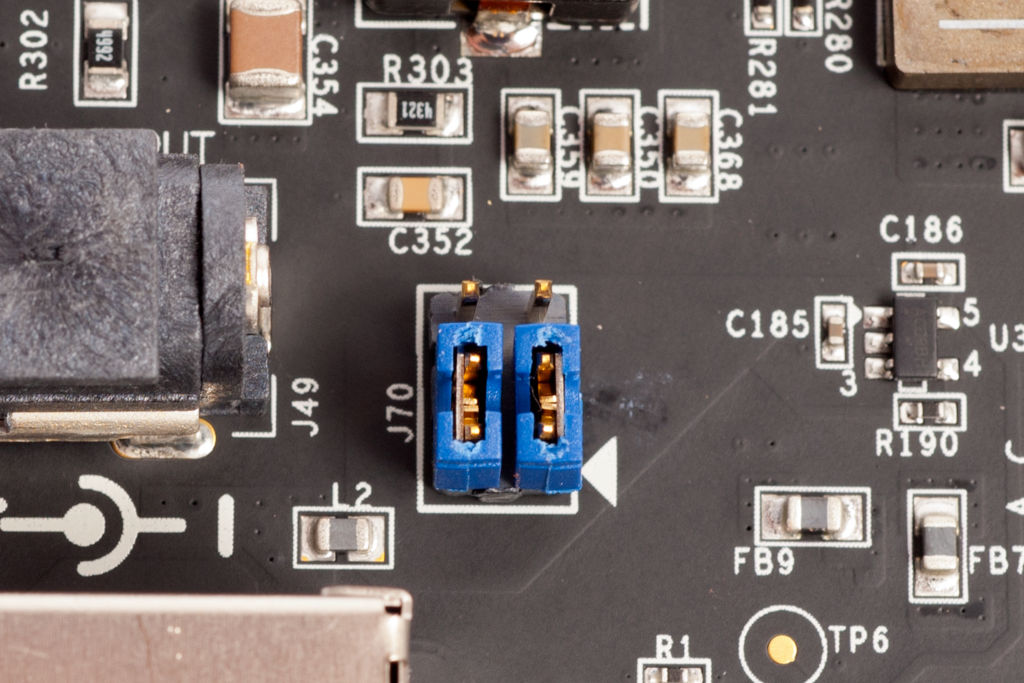-
Notifications
You must be signed in to change notification settings - Fork 459
bladeRF Accessories
This page lists accessories, tools, and parts that bladeRF users may find useful. Please feel free to add your favorites!
The DC barrel jack on the bladeRF requires a 5 V adapter, which should be rated to supply at least 1.5 A. Many supplies will experience significant voltage droop as the current draw approaches as little as 50% of the rated maximum. If the voltage droops too low, it will degrade the performance of the bladeRF.
When selecting a power supply, look for a load current / output voltage plot. For best results, the voltage should remain above 4.5 V at the expected current draw. If such a plot is not available, it is advisable to choose a supply with more output current to compensate. The recommended OMNIHIL supply can source 3 A, which is more than enough for any application. It is also a medical-grade supply and the voltage droop occurs much closer to the rated maximum current draw compared to typical power supplies with similar specifications.
- Voltage: 5 V
- Current: 1.5 - 3 A
- Plug inner diameter: 2.5 mm (V+)
- Plug outer diameter: 5.5 mm (GND)
- Over-voltage, over-current, short-circuit protection: recommended
Shown on page 14 of the bladeRF schematic, the DC barrel jack is a Switchcraft Inc RAPC712X. Remember that both jumpers on J70 need to be moved when switching between USB power and the DC barrel input.
J70 Pinout:
4 3
5 2
6 1 <| (Pin 1 silkscreen annotation) - Jumper J70 pins 2 and 3
- Jumper J70 pins 4 and 5

- Jumper J70 pins 1 and 2
- Jumper J70 pins 5 and 6

Shown on page 17 of the schematic, the bladeRF 2.0 Micro features a TPS2115A power multiplexer that will automatically select the appropriate voltage source. If 5 V is present on the DC power jack, the power mux will select the DC jack as the voltage source. Otherwise, it will use the 5 V from the USB host. If using, it is recommended to insert and power the DC jack first, followed by the USB plug.
You should never transmit without a 50 ohm load attached to the bladeRF's TX port, whether it be an antenna or a terminator. The same goes for the outputs on the XB-200.
Similarly, you should not connect the bladeRF TX port directly to the RX port. If you'd like to externally loop TX into RX, a 30 dB attenuator is recommended.
- Jameco SMB-174MM-12-R
- Amphenol-RF Division 145101-01-12.00
Combiners provide an excellent means to "hard-wire" multiple devices together for testing and evaluation.
The mounting holes on the bladeRF and the add-on boards are intended for use with 2-56 machine screws.
- Radio Shack
- 2-56 Round-Head Machine Screws (Model: 64-3010 Catalog #: 6403010)
- 2-56 Hex Nuts (Model: 64-3017 Catalog #: 6403017).
- Home Depot
- http://www.homedepot.com/p/Crown-Bolt-2-56-x-3-8-in-Phillips-Slotted-Round-Head-Machine-Screws-37011/203085930 (includes 10 screws and 10 nuts)
- Terasic Blaster Cable
- via terasIC website
- via Digi-Key
- via Mouser
- IntelFPGA USB Blaster
- via Intel
- Segger J-Link
- The J-Link PLUS (or J-Link EDU for students) are recommended
- See Segger's distributor page for a distributor near you!
An RF test enclosure is an excellent way to perform testing without causing interference. Use of a well-shielded test enclosure is highly recommended.